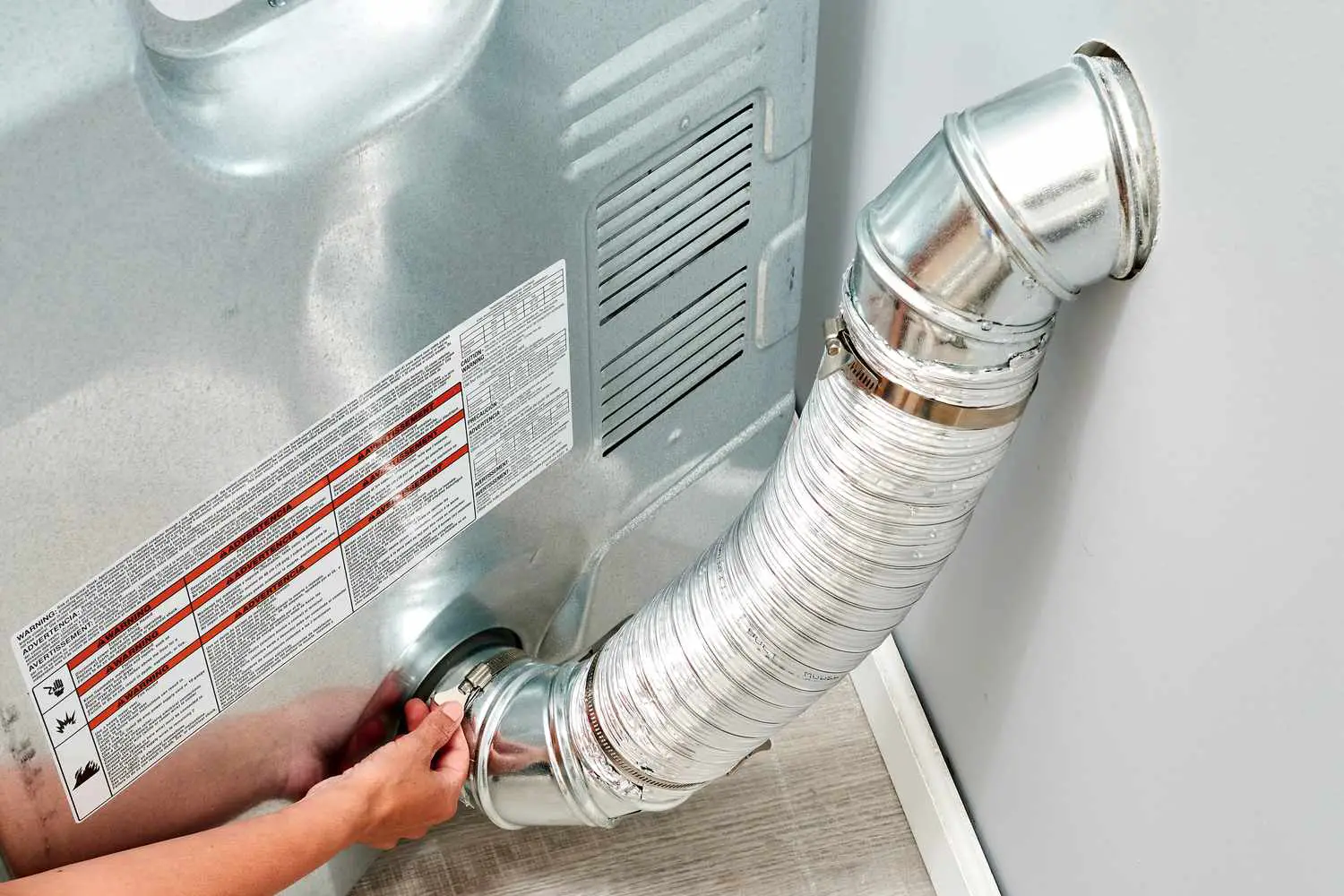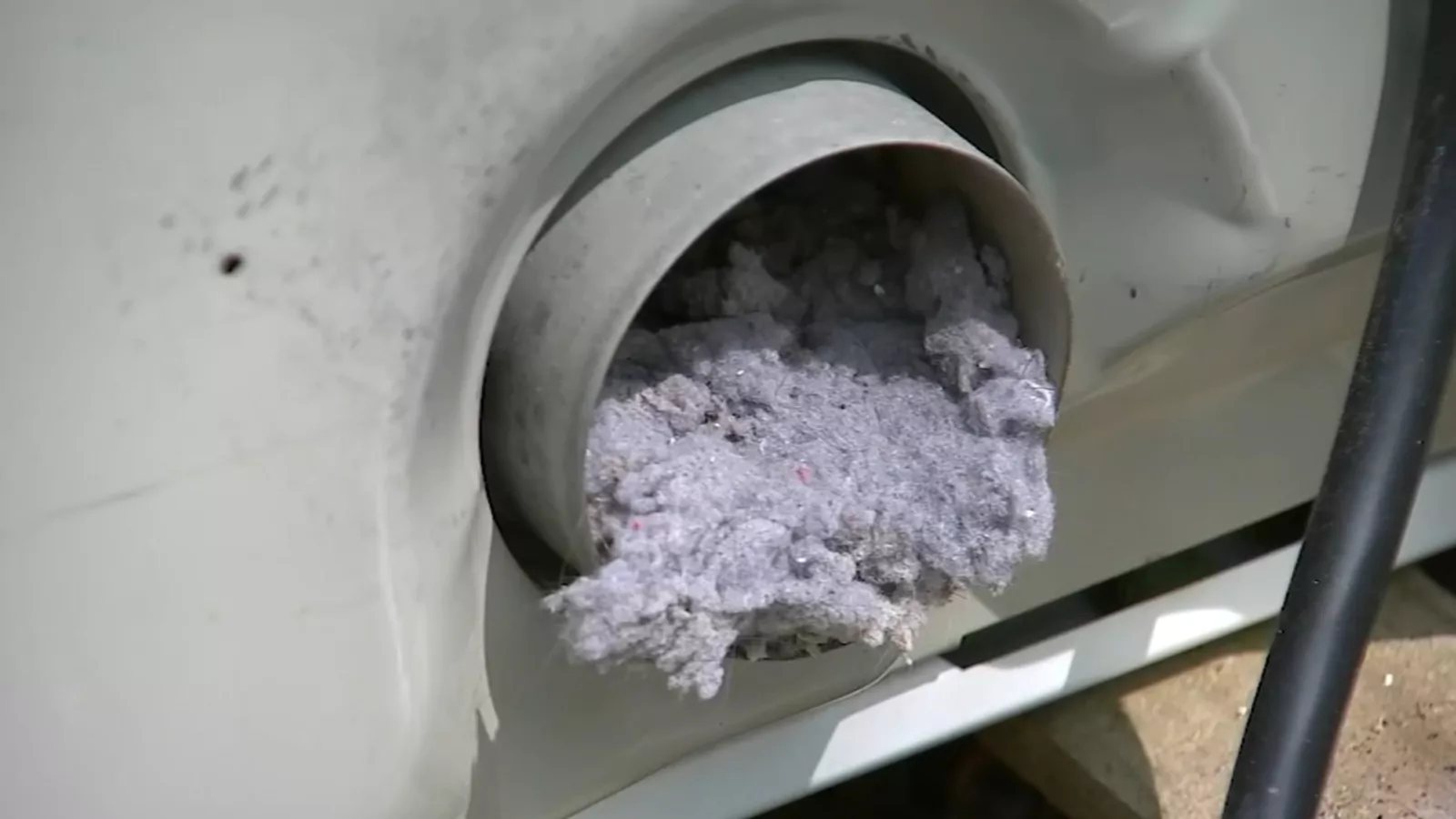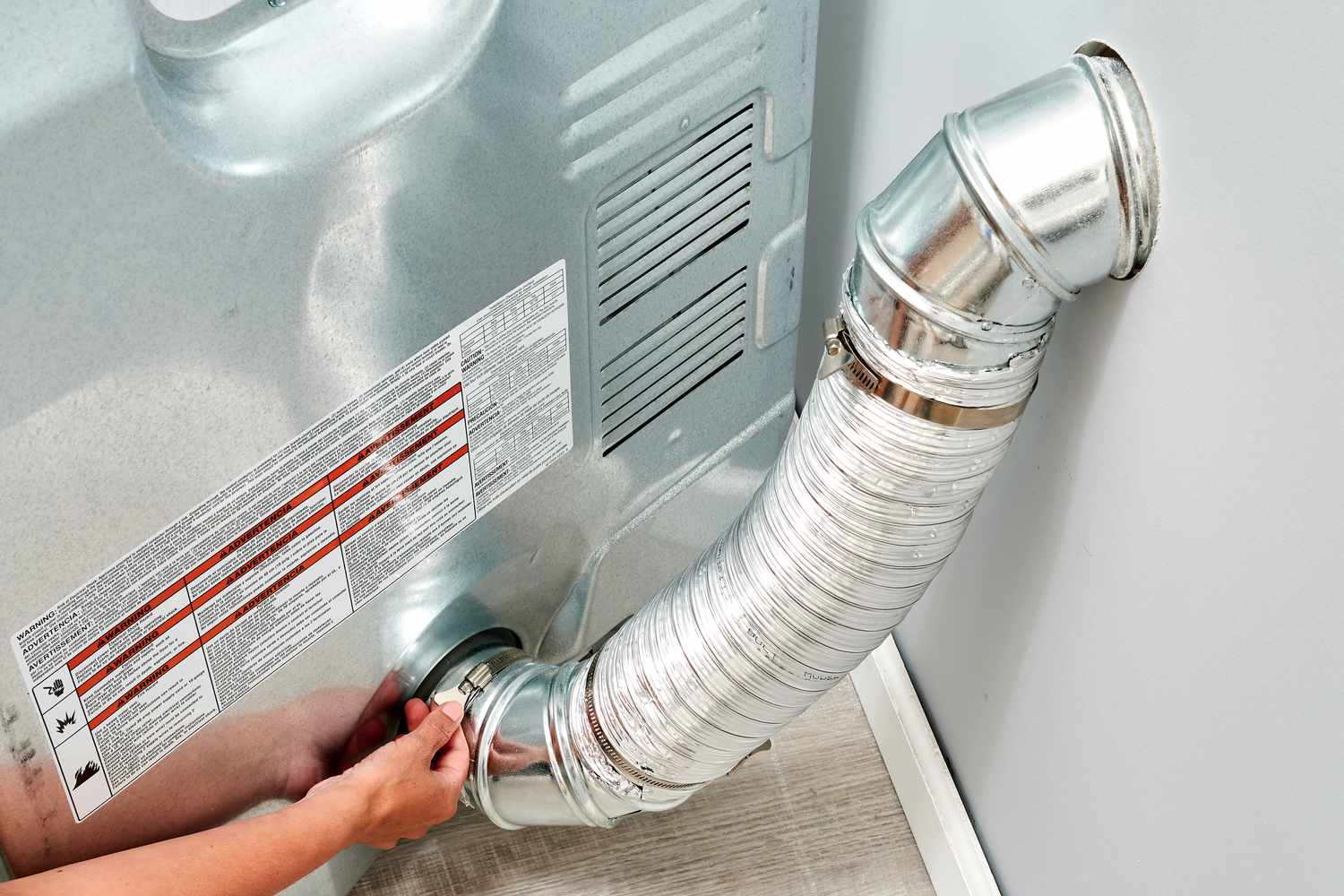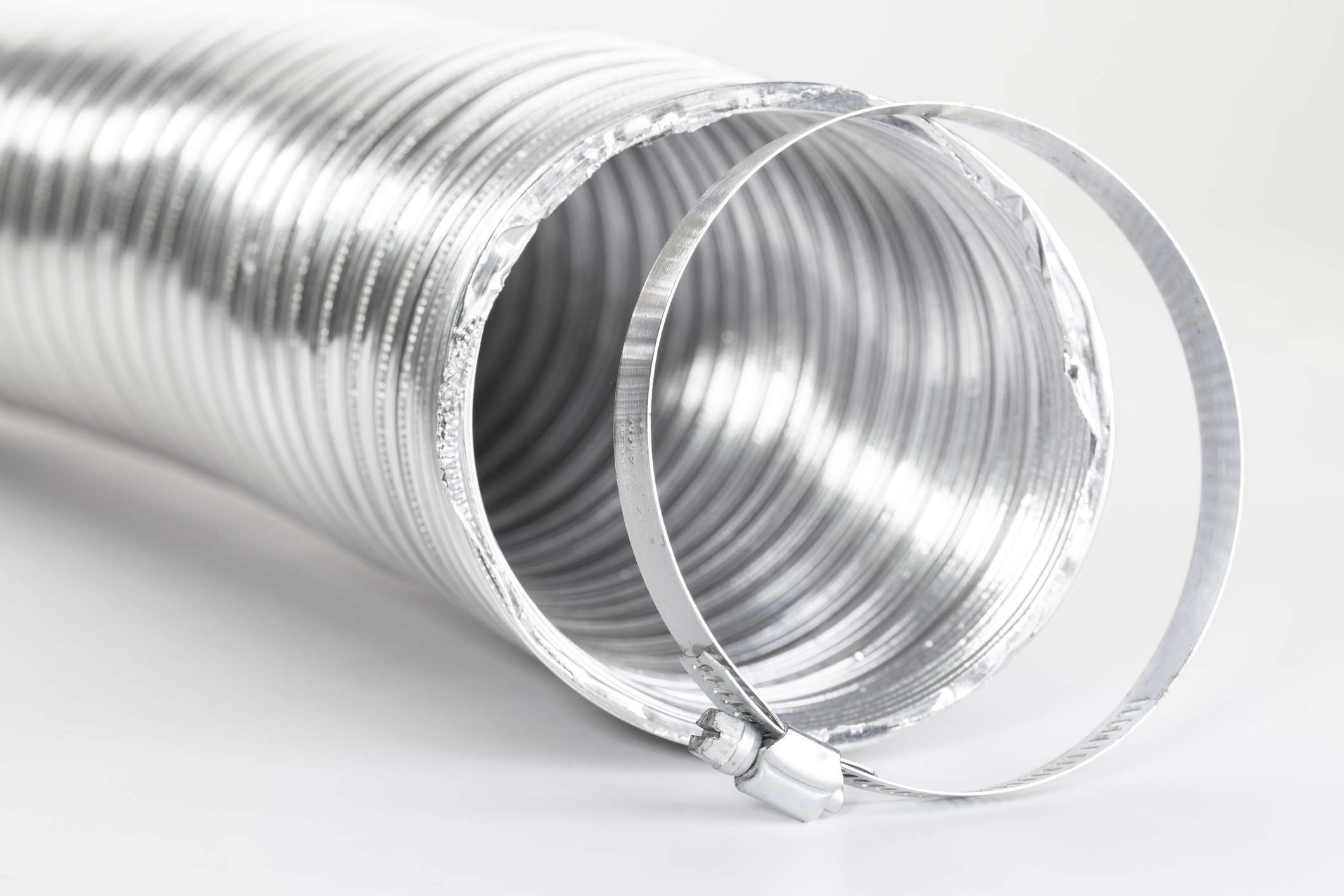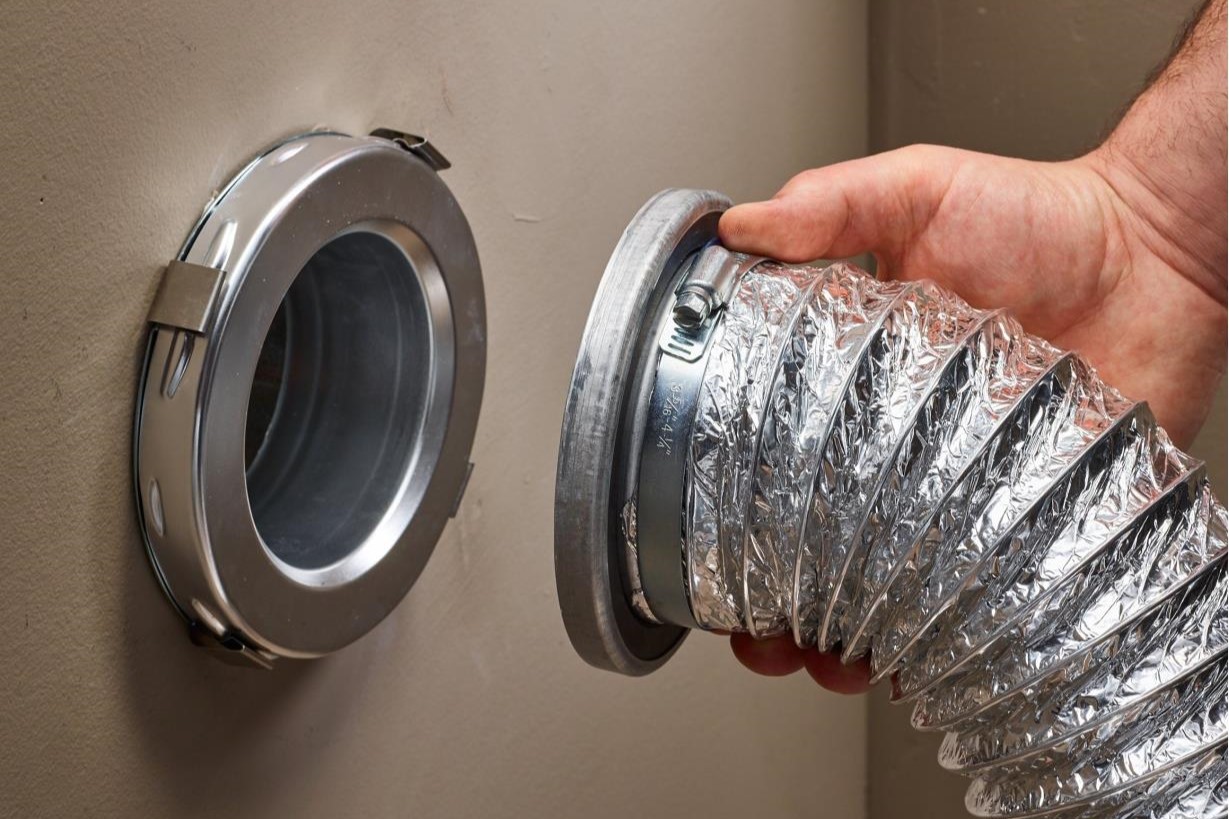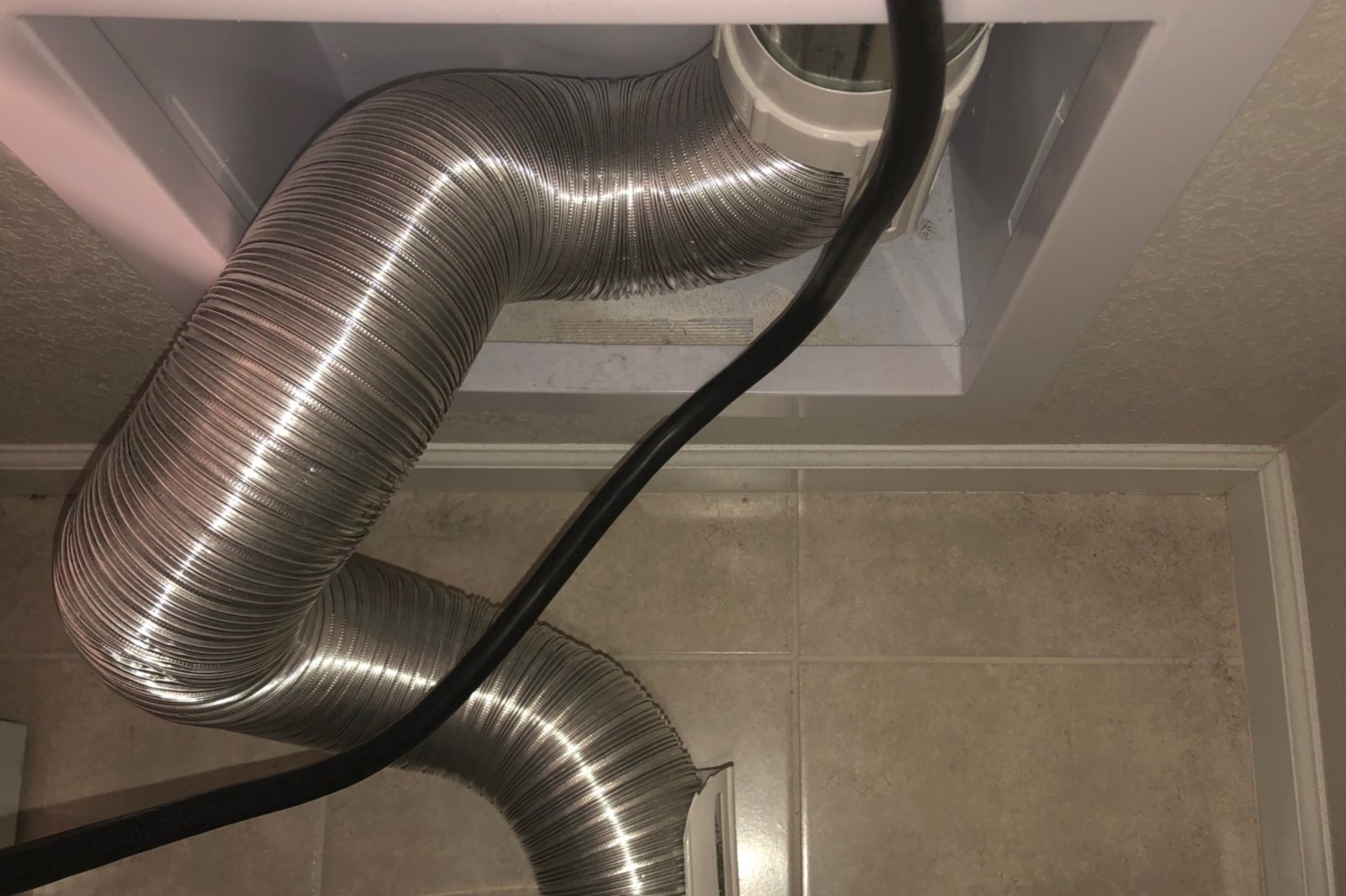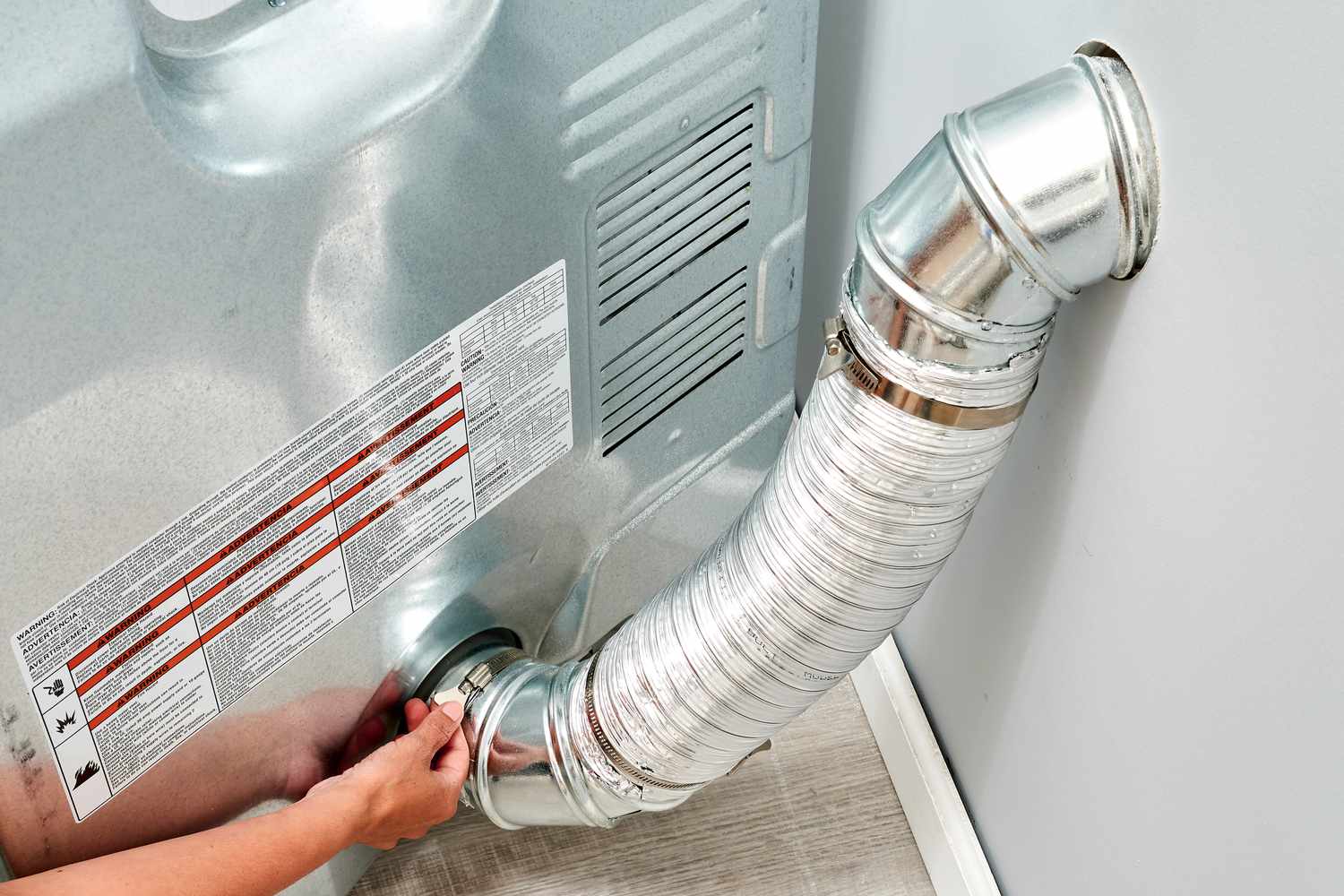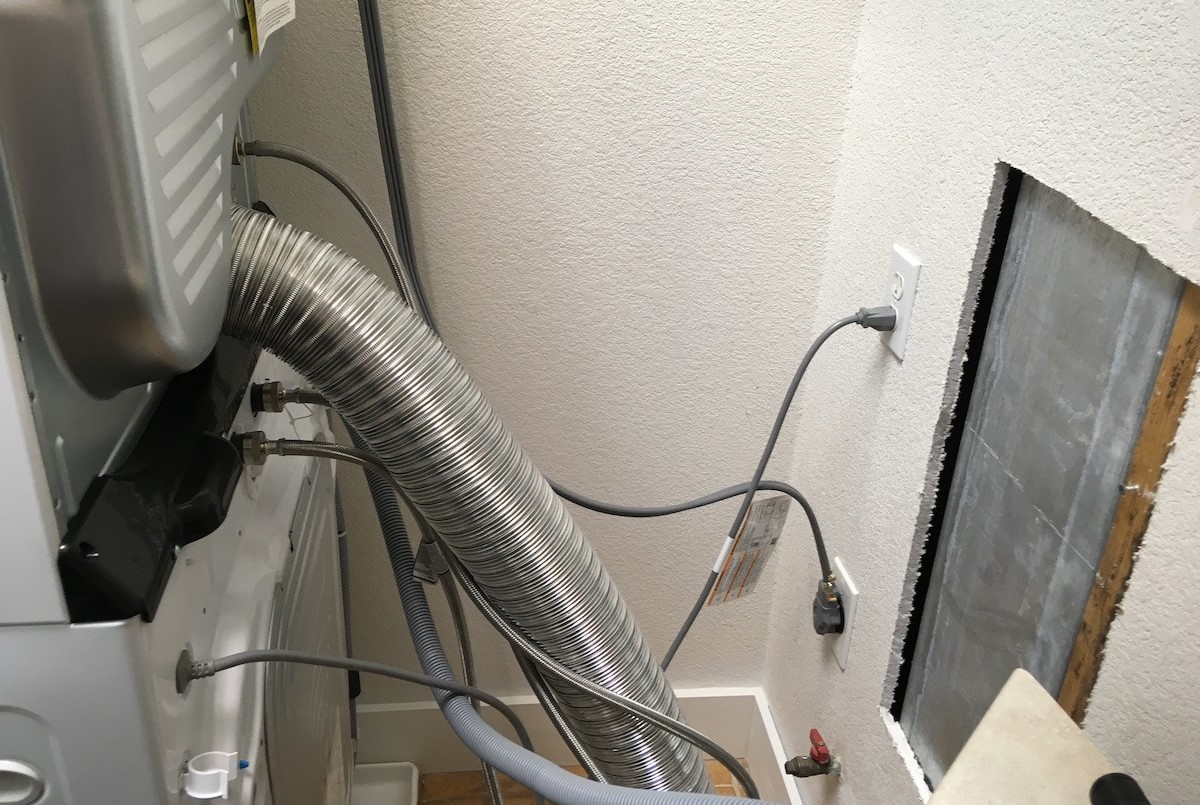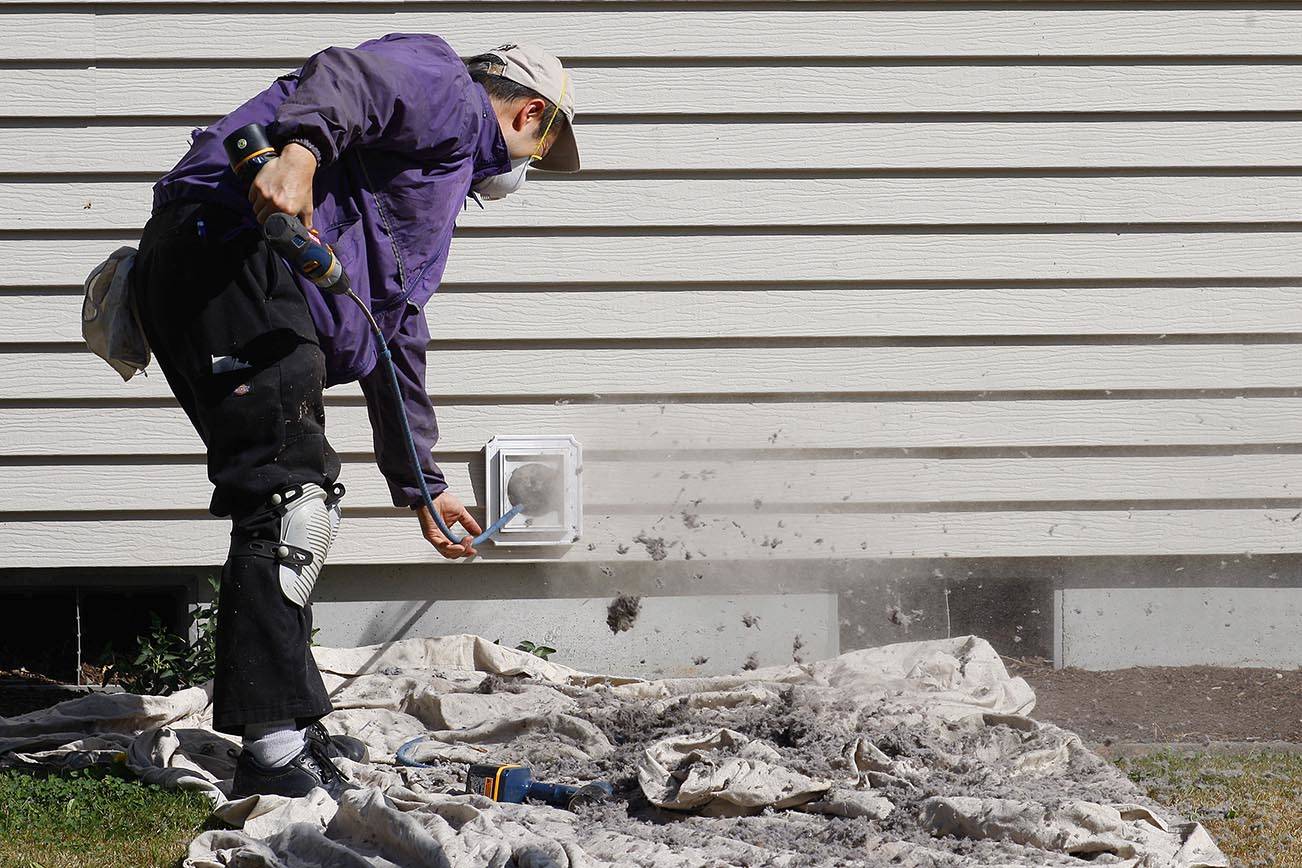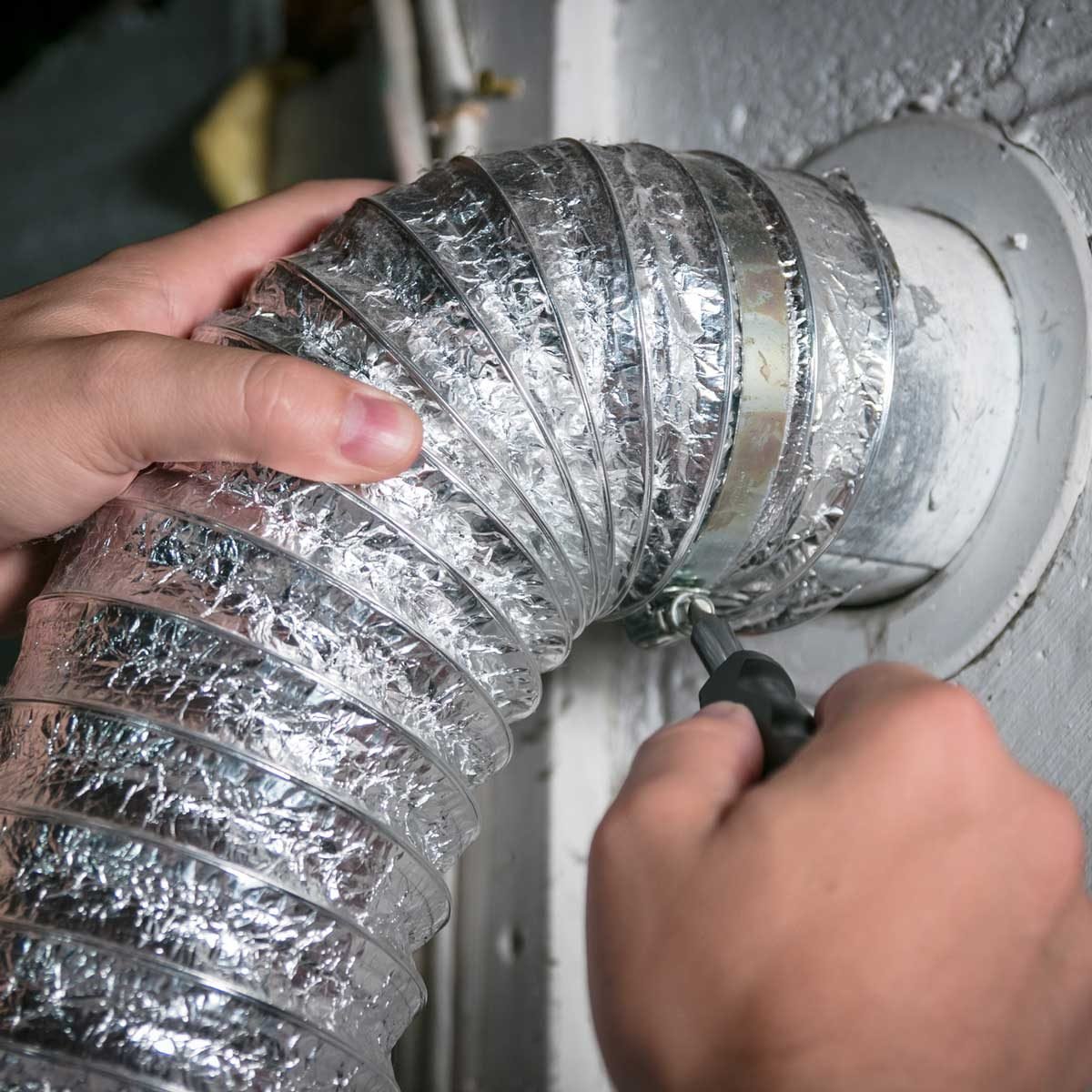Home>Home Maintenance>How Long Can A Dryer Vent Be
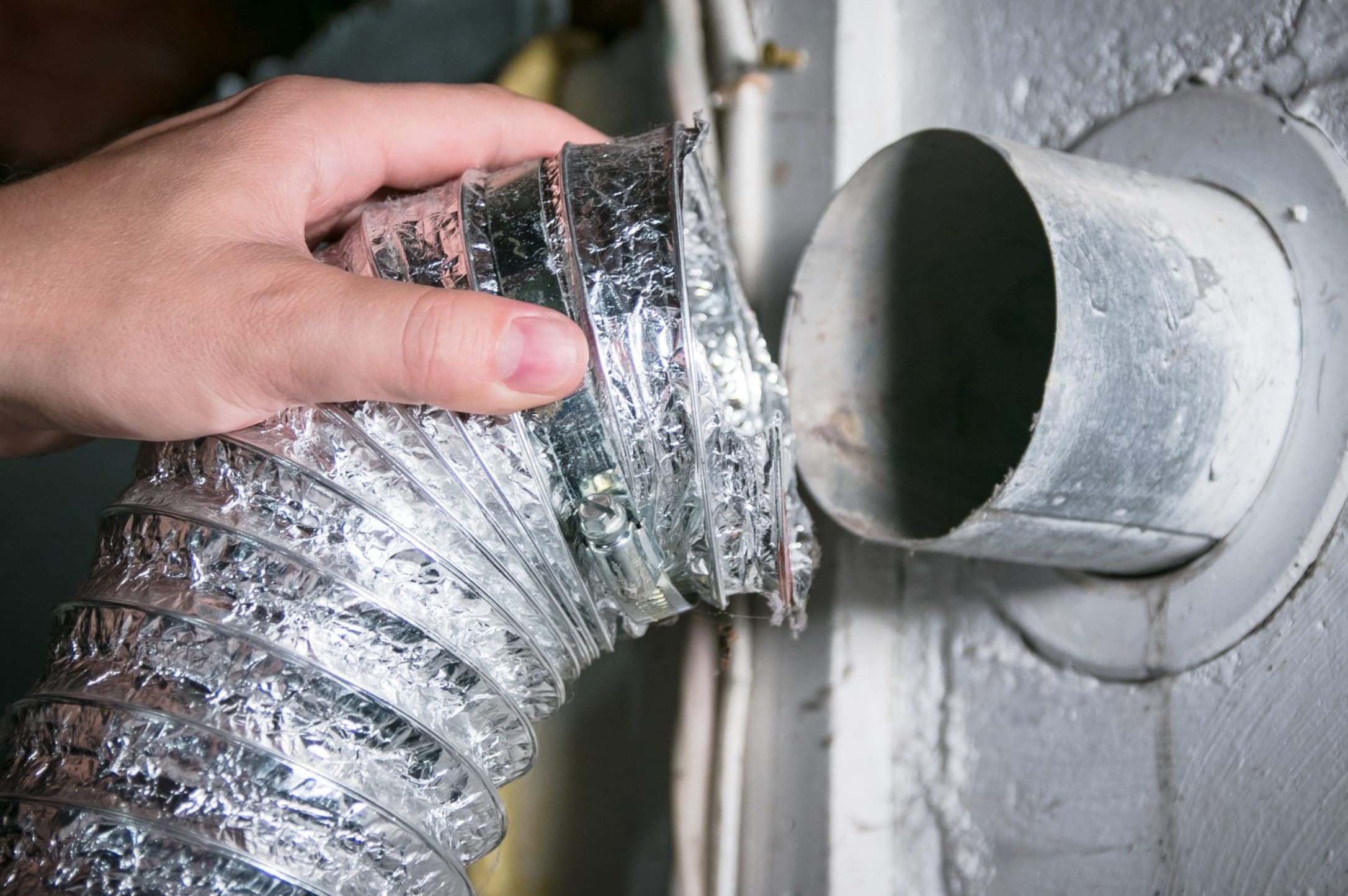

Home Maintenance
How Long Can A Dryer Vent Be
Modified: March 6, 2024
Ensure proper home maintenance by understanding the length of dryer vents. Discover how long a dryer vent can be and prevent potential hazards.
(Many of the links in this article redirect to a specific reviewed product. Your purchase of these products through affiliate links helps to generate commission for Storables.com, at no extra cost. Learn more)
Introduction
Welcome to our comprehensive guide on dryer vents and the factors that influence their length. As homeowners, we often take our appliances for granted and overlook the crucial maintenance they require. One such appliance that demands regular attention is the dryer.
A properly functioning dryer vent is essential for efficient airflow and preventing potential hazards. But have you ever wondered, how long can a dryer vent be? In this article, we will explore the factors that influence the length of a dryer vent, the recommended maximum distance for venting, the consequences of having a long vent, and some essential tips for maintaining a long dryer vent.
Whether you are a new homeowner trying to understand the intricacies of home maintenance or a seasoned pro looking for a refresher, this article will provide you with the necessary knowledge to keep your dryer vent in optimal condition. So, let’s dive in!
Key Takeaways:
- Keep your dryer vent under 25 feet to maintain efficient airflow and prevent hazards. Regular cleaning, using rigid metal ducts, and minimizing bends can help maintain optimal performance.
- Long dryer vents can lead to poor airflow, lint buildup, fire hazards, and decreased appliance lifespan. Follow recommended guidelines and maintain your vent to ensure safety and efficiency.
Read more: How Long Should A Dryer Vent Be
Factors influencing the length of a dryer vent
The length of a dryer vent can vary depending on several factors. Here are some key factors that influence the length of a dryer vent:
- Location of the dryer: The location of your dryer plays a significant role in determining the length of the vent. If your dryer is situated on an exterior wall, the vent may be shorter compared to a dryer located in the center of your home.
- Distance to the exterior wall: The proximity of your dryer to the exterior wall affects the vent length. The closer the dryer is to the wall, the shorter the vent can be.
- Number of bends and turns: The more bends and turns in the venting system, the longer the vent needs to be. Each bend or turn adds resistance to the airflow, requiring adequate length for proper ventilation.
- Vertical vs. horizontal venting: The orientation of the venting system also affects its length. Vertical vents require more length due to the natural pull of gravity, while horizontal vents may have shorter lengths.
- Diameter of the vent pipe: The diameter of the vent pipe can impact the maximum length of the vent. A larger diameter pipe can accommodate longer lengths, while a smaller diameter pipe may require a shorter vent length.
- Obstructions and obstacles: Any obstructions or obstacles in the venting system, such as furniture, walls, or other appliances, can influence the vent length. These barriers may require additional length to navigate around them effectively.
It is crucial to consider these factors when determining the ideal length for your dryer vent. Failure to account for these variables can lead to inefficient airflow, increased energy consumption, and potential safety hazards. Now that we understand the factors influencing the vent length, let’s explore the recommended maximum length for a dryer vent in the next section.
Recommended maximum length for a dryer vent
When it comes to the maximum length of a dryer vent, it is important to follow the guidelines set by industry experts. These recommendations are designed to ensure optimal performance, energy efficiency, and safety. While the specific length may vary depending on the manufacturer and type of dryer, the general consensus is as follows:
- The maximum length for a dryer vent should not exceed 25 feet.
- If additional length is required, every 90-degree bend in the vent should subtract 5 feet, and every 45-degree bend should subtract 2.5 feet from the overall length.
- For longer vent runs, a larger diameter vent pipe should be used to reduce resistance and maintain proper airflow.
- It is important to note that these guidelines apply to rigid or semi-rigid metal vents. Flexible or foil-style ducts are not recommended due to their tendency to accumulate lint and restrict airflow.
By adhering to these recommendations, you can ensure that your dryer operates efficiently and safely. It is essential to consult your dryer’s manufacturer guidelines or a professional if you are unsure about the specific requirements for your appliance.
Next, let’s explore the consequences of having a long dryer vent and why it is crucial to maintain its proper length.
A dryer vent should be no longer than 25 feet for optimal performance. If the vent needs to be longer, use a straighter, shorter route and consider adding a booster fan. Regular cleaning and maintenance are also important to prevent clogs and fire hazards.
Consequences of having a long dryer vent
Having a long dryer vent can have several negative consequences on the performance and safety of your appliance. Here are some of the potential issues that can arise from an excessively long vent:
- Poor airflow: One of the primary concerns with a long dryer vent is reduced airflow. As the air travels a longer distance, it encounters more resistance, leading to restricted airflow. Restricted airflow can result in longer drying times, inefficient performance, and increased energy consumption.
- Lint buildup: A long dryer vent increases the chances of lint buildup. Lint, a byproduct of drying clothes, tends to accumulate in vent pipes. With a lengthy vent, there is a higher likelihood of lint getting trapped, leading to blockages. Blocked vents can restrict airflow, increase drying time, and pose a fire hazard.
- Fire hazard: A clogged or blocked dryer vent can become a fire hazard. When lint accumulates and restricts airflow, it can cause the dryer to overheat. This overheating can ignite the lint, resulting in a potentially disastrous fire. Regular maintenance of the vent, including cleaning and proper length maintenance, is crucial for preventing such hazards.
- Moisture buildup: Excessive vent length can contribute to moisture buildup. If the moist air from the dryer does not have sufficient airflow to escape, it can condense within the vent pipe. This trapped moisture can lead to mold growth, corrosion, and damage to the venting system.
- Decreased appliance lifespan: A long vent can put additional strain on the dryer’s internal components. When the appliance has to work harder to push air through a lengthy vent, it can lead to increased wear and tear, potentially reducing the lifespan of the dryer.
To avoid these consequences, it is crucial to maintain the proper length of your dryer vent and perform regular cleaning and maintenance. The next section will provide some valuable tips for maintaining a long dryer vent and minimizing these risks.
Tips for maintaining a long dryer vent
Maintaining a long dryer vent requires regular attention and proper care to ensure optimal performance and reduce the risk of hazards. Here are some essential tips to help you maintain your dryer vent:
- Clean the vent regularly: Regularly clean your dryer vent to remove any lint or debris that may have accumulated. Use a vent brush or vacuum attachment to gently clean the inside of the vent pipe. Pay close attention to the areas near bends and turns, as these areas are more prone to lint buildup.
- Inspect the vent for damages: Periodically check the venting system for any damages or leaks. Ensure that all connections are secure and that there are no signs of wear and tear. Replace any damaged or deteriorating parts promptly to maintain the integrity of the vent.
- Shorten the vent if necessary: If you notice that your dryer vent exceeds the recommended maximum length, consider shortening it. Consult a professional if you are unsure about the proper length or if there are any structural limitations to making the necessary adjustments.
- Avoid using flexible ducts: Flexible or foil-style ducts tend to accumulate lint and restrict airflow. It is best to use rigid or semi-rigid metal ducts for better ventilation and to reduce the chances of lint buildup.
- Minimize bends and turns: Limit the number of bends and turns in the venting system, as each bend can add resistance to the airflow. Keep the vent as straight and direct as possible to ensure efficient ventilation.
- Consider a larger diameter vent pipe: If you have a long vent run, consider using a larger diameter vent pipe. A larger pipe can help reduce resistance and maintain better airflow, improving the overall efficiency of your dryer.
- Keep the dryer area clean: Alongside maintaining the vent, keep the area around the dryer clean and free from dust or lint. Regularly clean the lint trap and ensure that there is adequate space around the dryer for proper ventilation.
- Know the capacity of your dryer: Understand the capacity of your dryer and avoid overloading it. Overloading the dryer can put additional strain on the venting system, leading to potential issues. Follow the manufacturer’s guidelines for load capacity to maintain proper airflow.
By following these tips, you can maintain a long dryer vent and minimize the risks associated with poor ventilation. Regular maintenance and attention to detail will contribute to the longevity and efficient operation of your dryer.
As we conclude this article, we hope that you now have a better understanding of the factors influencing the length of a dryer vent, the recommended maximum length, the consequences of having a long vent, and the essential tips for maintaining it. Remember, a well-maintained dryer vent not only enhances the performance of your appliance but also ensures the safety of your home. So, prioritize regular maintenance and enjoy the benefits of a properly functioning dryer vent.
Read more: Who Can Install A Dryer Vent
Conclusion
Proper maintenance of a dryer vent is a vital aspect of home maintenance and safety. Understanding the factors that influence the length of a dryer vent is essential for efficient airflow and preventing potential hazards.
In this article, we discussed the factors that influence the length of a dryer vent, including the location of the dryer, distance to the exterior wall, number of bends and turns, venting orientation, diameter of the vent pipe, and obstructions or obstacles in the venting system.
We also explored the recommended maximum length for a dryer vent, which should not exceed 25 feet. It is essential to consider the guidelines set by industry experts, including subtracting lengths for bends and turns, using appropriate vent pipe materials, and maintaining proper airflow.
Having a long dryer vent can result in poor airflow, lint buildup, fire hazards, moisture buildup, and decreased appliance lifespan. Regular maintenance is crucial to prevent these consequences and ensure the optimal performance of your dryer. Cleaning the vent, inspecting for damages, shortening the vent if necessary, avoiding flexible ducts, minimizing bends and turns, using a larger diameter vent pipe, and keeping the dryer area clean are some key tips for maintaining a long dryer vent.
Remember, a well-maintained dryer vent not only improves the efficiency of your appliance and prolongs its lifespan but also reduces the risks of fire and other hazards. Prioritize regular maintenance, follow manufacturer guidelines, and consult professionals if needed to ensure your dryer vent is in optimal condition.
We hope this comprehensive guide has provided you with the necessary knowledge and insights to understand the length requirements of a dryer vent and the importance of maintenance. By implementing proper care and following the provided tips, you can enjoy a safe and efficient drying experience for years to come.
Thank you for reading, and best of luck in maintaining your long dryer vent!
Frequently Asked Questions about How Long Can A Dryer Vent Be
Was this page helpful?
At Storables.com, we guarantee accurate and reliable information. Our content, validated by Expert Board Contributors, is crafted following stringent Editorial Policies. We're committed to providing you with well-researched, expert-backed insights for all your informational needs.


